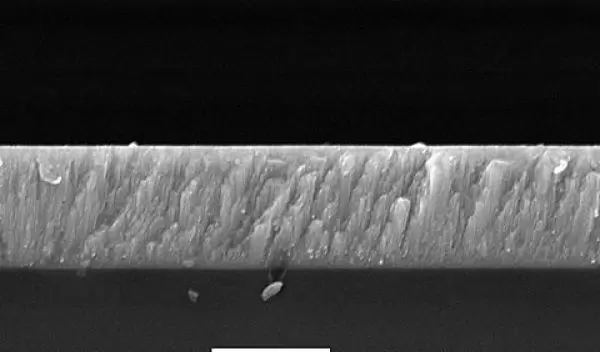
Making Nanoscale Solar Cells in China
When I entered graduate school for materials science, I didn't expect to travel halfway around the world to conduct research on cutting-edge photovoltaics. I certainly didn't expect to be learning a new language, eating pig intestines and attending the Summer Olympics, to boot. As it turns out, it's all in a summer's work for a National Science Foundation (NSF)-Integrated Graduate Education Research Traineeship (IGERT) student.
The IGERT in Sustainable Energy from Solar Hydrogen at the University of Delaware trains engineering and public policy students to come up with cross-disciplinary solutions to the severe energy problems facing our generation. Each student completes an international internship. I was lucky enough to be offered a position at GE's China Technology Center (CTC) in Shanghai last summer. Armed with a semester of Mandarin and a willingness to eat anything, I was on my way.
Solar Cells Thinner Than Paper
My graduate research involves using nanostructured thin films for clean energy conversion. "Nanostructured thin film" is a fancy way of referring to a very, very thin layer of some specialized material--less than 1/100th of the thickness of a piece of paper.
Thin films have two major advantages: one, you use a very small amount of material, which is handy if the stuff is expensive. And two, the rules governing materials behavior tend to change when structures get down to the nanoscale; this can lead to greatly improved optical or electronic properties compared to a bulk material.
At home in Delaware, I make thin-film photo-catalysts for splitting water molecules into their component elements. We put our films in water and connect them to a circuit, and when light shines on the film, it actually splits the water into oxygen and hydrogen, the latter of which can be run through a fuel cell to generate clean electricity.
At CTC in Shanghai, I switched to making thin films for solar cells. Instead of splitting water, these films absorb solar energy to directly produce electricity. The new project I worked on in CTC's Functional Materials Lab involved making cadmium telluride (CdTe) thin films. CdTe is less efficient than silicon, the most common solar cell material, but much cheaper. I used a simple technique called physical vapor deposition, where a "boat" holding pure CdTe was heated to evaporate the material, which then deposited on a glass or plastic substrate above the boat.
We tried a range of different deposition conditions, and looked at the film's crystal structure using X-ray diffraction and scanning electron microscopes. It was a great opportunity to use the skills I had learned in school for a different and exciting application.
Culture Shock
As the first international intern in CTC's mammoth campus, I don't think anyone (especially me) knew quite what to expect. I was immediately blown away by the hospitality of my Chinese colleagues and friends. Many were eager to learn about American life, which led to thought-provoking cultural discussions at weekly English Club meetings. In return, my patient colleagues added to my Mandarin vocabulary, and weekends and evenings were filled with guided tours into the finer points of Chinese cuisine.
Even given the warm welcome I received, being so culturally isolated was a new and affecting experience. It's not easy to sit at a desk surrounded by chatter that you can't understand. I gained new empathy for the numerous international students and researchers who come to our shores every year. I think my situation went a step further, though--it's easier to blend in America, the original "melting pot," than in a population where one is immediately recognizable as out of place.
Through it all, however, the universality of the laboratory was a great comfort. Whether in the Far East or Eastern Seaboard, there are always the lab safety inspectors, the group meetings, the 10 minutes to goof around while vacuum chambers pump down. Science is science wherever you are, and holds the same promise, to provide a cleaner, safer, more beautiful world for the next generation. I would love for every young investigator to have such an eye-opening experience.
-- Meghan Schulz, University of Delaware MESchulz@gmail.com
This Behind the Scenes article was provided to LiveScience in partnership with the National Science Foundation.


